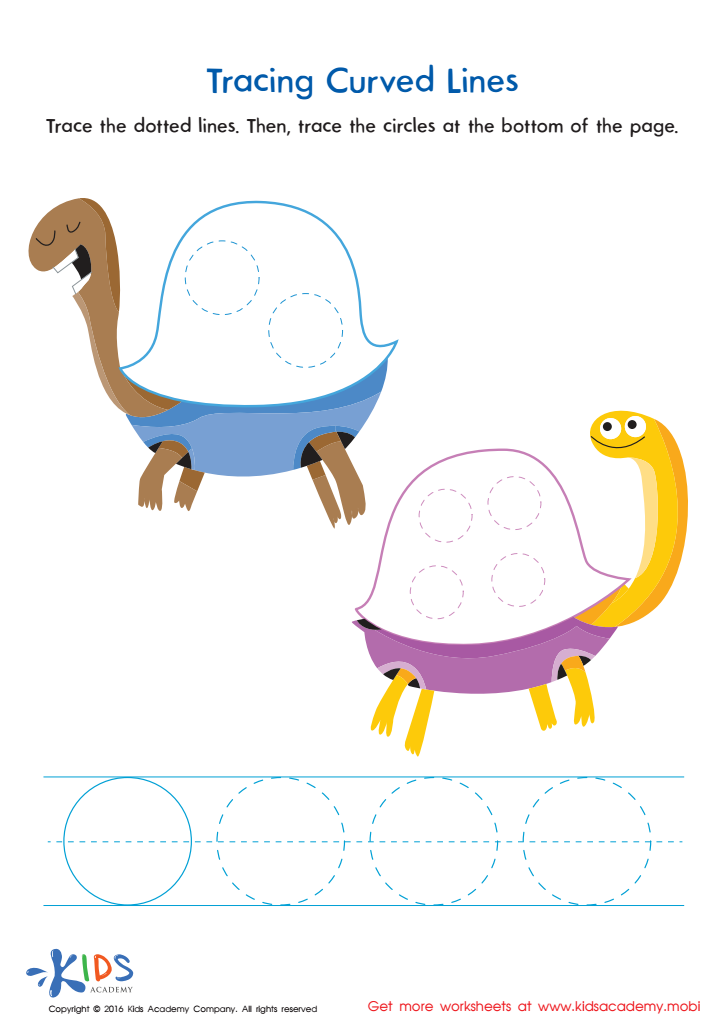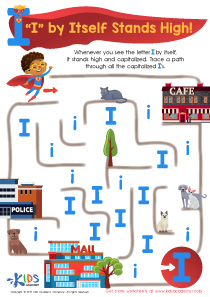Normal Tracing Lines and Curves Worksheets for Ages 4-6
5 filtered results
-
From - To
Our Normal Tracing Lines and Curves Worksheets for ages 4-6 are designed to develop fine motor skills and handwriting readiness in young learners. These engaging, easy-to-follow exercises guide children through tracing lines, shapes, and curves, laying a strong foundation for writing letters and numbers. Each worksheet is carefully crafted to stimulate hand-eye coordination, concentration, and dexterity, making learning fun and effective. Perfect for preschool and kindergarten students, these printable resources are a valuable addition to any early childhood education toolkit. Foster a love for learning and enhance essential skills with our high-quality tracing worksheets.
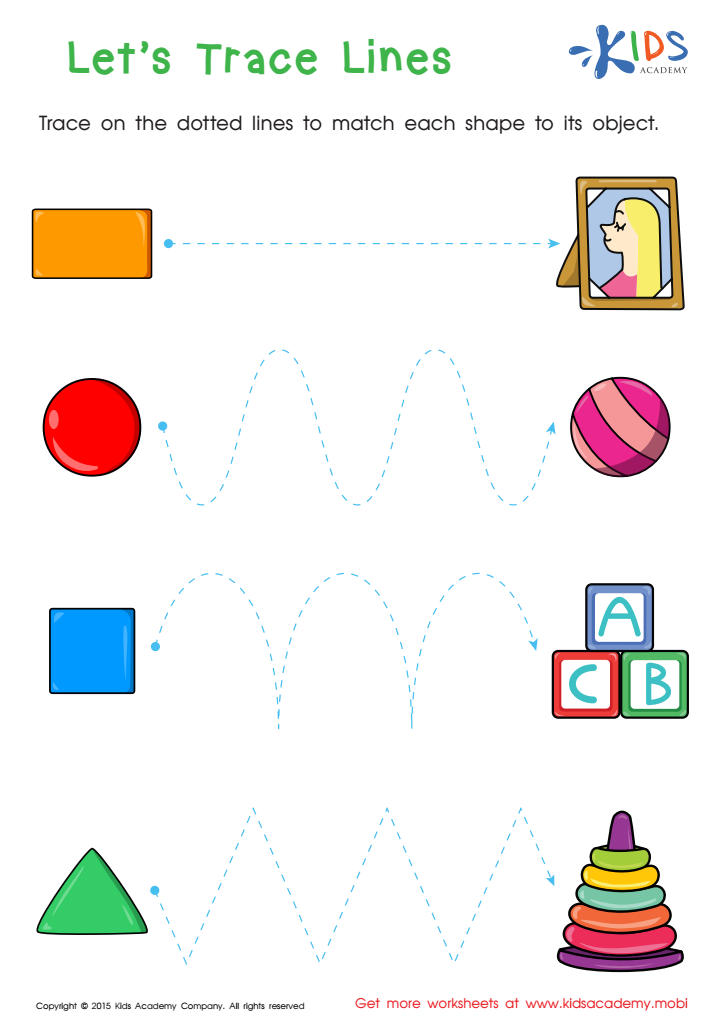

First Words: Let's Trace Lines Worksheet
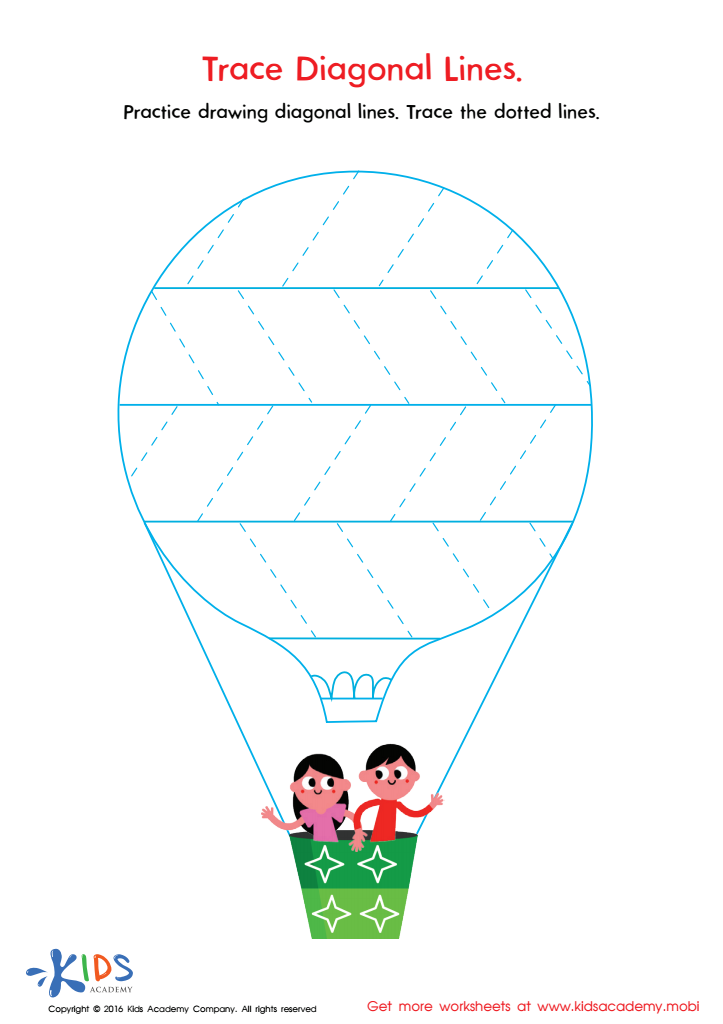

Trace Diagonal Lines Worksheet
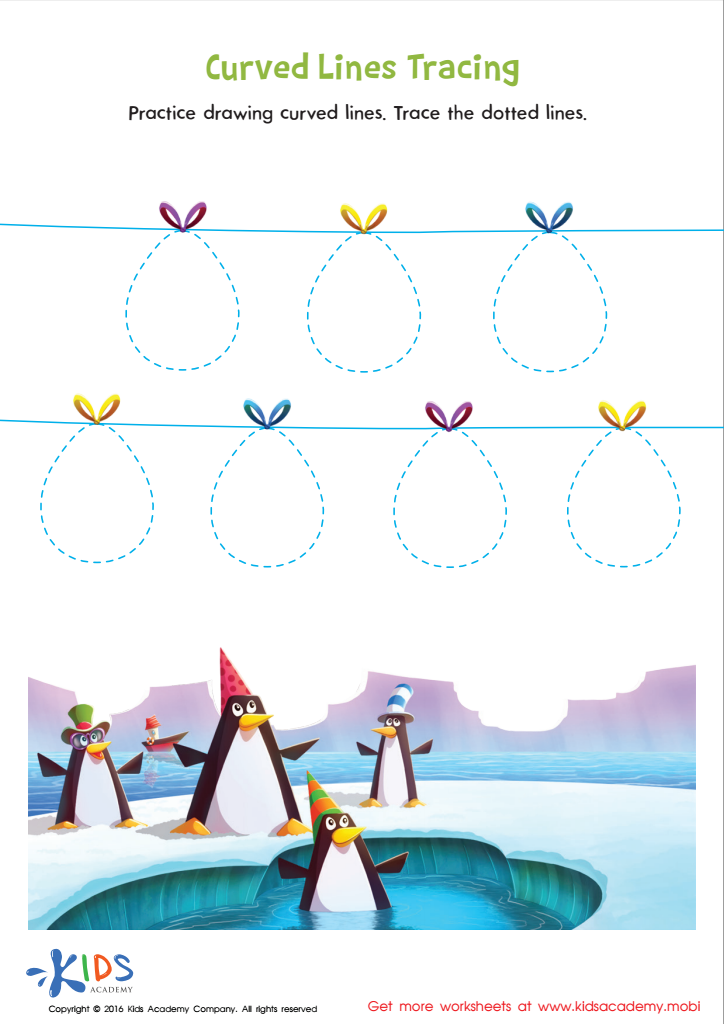

Curved Lines Tracing Worksheet
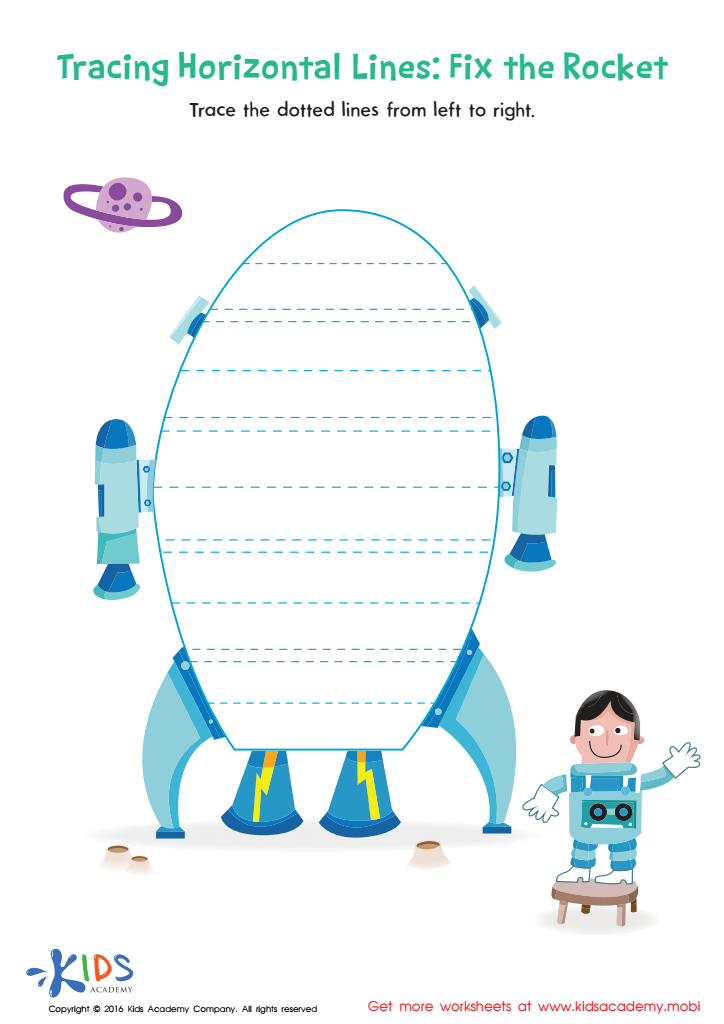

Tracing Horizontal Lines Worksheet
Parents and teachers should prioritize activities that involve normal tracing lines and curves for children ages 4-6, as these foundational exercises significantly impact early childhood development. At this critical stage, fine motor skills, hand-eye coordination, and pre-writing abilities are rapidly developing. Tracing patterns of lines and curves helps children to strengthen the small muscles in their hands and fingers, which are essential for controlling a pencil and other writing instruments.
Moreover, these activities lay the groundwork for letter and number formation, a key component of early literacy and numeracy. Engaging children in tracing ensures they understand the structure and proper formation of characters, leading to better handwriting skills. Beyond physical development, tracing activities promote cognitive growth by teaching children to follow directions, recognize patterns, and focus their attention on a task, fostering discipline and concentration.
Additionally, tracing can be a fun and engaging way to build children's confidence. As they see themselves improving, they develop a positive attitude towards learning and school. Therefore, incorporating tracing lines and curves into early education not only facilitates immediate skill acquisition but also sets the stage for future academic success and a lifelong love for learning.

 Assign to the classroom
Assign to the classroom
